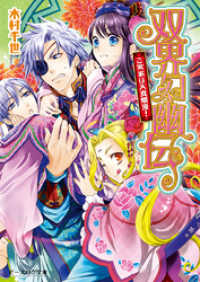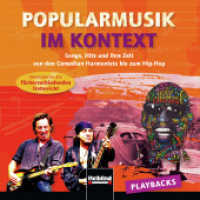- ホーム
- > 洋書
- > 英文書
- > Religion / Ethics
Full Description
Academic study of the tantric traditions has blossomed in recent decades, in no small measure thanks to the magisterial contributions of Alexis G. J. S. Sanderson, until 2015 Spalding Professor of Eastern Religions and Ethics at Oxford University. This collection of essays honours him and touches several fields of Indology that he has helped to shape (or, in the case of the Śaiva religions, revolutionised): the history, ritual, and philosophies of tantric Buddhism, Śaivism and Vaiṣṇavism; religious art and architecture; and Sanskrit belles lettres. Grateful former students, joined by other experts influenced by his scholarship, here offer papers that make significant contributions to our understanding of the cultural, religious, political, and intellectual histories of premodern South and Southeast Asia.
Contributors are: Peter Bisschop, Judit Törzsök, Alex Watson, Isabelle Ratié, Christopher Wallis, Péter-Dániel Szántó, Srilata Raman, Csaba Dezső, Gergely Hidas, Nina Mirnig, John Nemec, Bihani Sarkar, Jürgen Hanneder, Diwakar Acharya, James Mallinson, Csaba Kiss, Jason Birch, Elizabeth Mills, Ryugen Tanemura, Anthony Tribe, and Parul Dave-Mukherji.
Contents
Preface
List of Figures and Tables
Notes on Contributors
A Note on Alexis Sanderson and Indology
Dominic Goodall and Harunaga Isaacson
Bibliography of the Published Works of Alexis G.J.S. Sanderson
Introduction
Part 1 Early Śaivism
1 From Mantramārga Back to Atimārga: Atimārga as a Self-referential Term
Peter Bisschop
2 Why Are the Skull-Bearers (Kāpālikas) Called Soma?
Judit Törzsök
3 Dressing for Power: On vrata, caryā, and vidyāvrata in the Early Mantramārga, and on the Structure of the Guhyasūtra of the Niśvāsatattvasaṃhitā
Dominic Goodall
Part 2 Exegetical and Philosophical Traditions
4 Further Thoughts on Rāmakaṇṭha's Relationship to Earlier Positions in the Buddhist-Brāhmaṇical Ātman Debate
Alex Watson
5 Some Hitherto Unknown Fragments of Utpaladeva's Vivṛti (II): Against the Existence of External Objects
Isabelle Ratié
6 Alchemical Metaphors for Spiritual Transformation in Abhinavagupta's Īśvarapratyabhijñāvimarśinī and Īśvarapratyabhijñāvivṛtivimarśinī
Christopher D. Wallis
7 On Vāgīśvarakīrti's Influence in Kashmir and among the Khmer
Péter-Dániel Szántó
8 Reflections on the King of Ascetics (Yatirāja): Rāmānuja in the Devotional Poetry of Vedānta Deśika
Srilata Raman
Part 3 Religion, the State, and Social History
9 Not to Worry, Vasiṣṭha Will Sort It Out: The Role of the Purohita in the Raghuvaṃśa
Csaba Dezső
10 Buddhism, Kingship and the Protection of the State: The Suvarṇaprabhāsottamasūtra and Dhāraṇī Literature
Gergely Hidas
11 Adapting Śaiva Tantric Initiation for Exoteric Circles: The Case of the Lokadharmiṇī Dīkṣā and Its History in Early Medieval Sources
Nina Mirnig
12 Innovation and Social Change in the Vale of Kashmir, circa 900-1250 C.E.
John Nemec
13 Toward a History of the Navarātra, the Autumnal Festival of the Goddess
Bihani Sarkar
Part 4 Mantra, Ritual, and Yoga
14 Śārikā's Mantra
Jürgen Hanneder
15 The Kāmasiddhistuti of King Vatsarāja
Diwakar Acharya
16 The Lotus Garland (padmamālā) and Cord of Power (śaktitantu): The Brahmayāmala's Integration of Inner and Outer Ritual
Shaman Hatley
17 The Amṛtasiddhi: Haṭhayoga's Tantric Buddhist Source Text
James Mallinson
18 A Sexual Ritual with Māyā in Matsyendrasaṃhitā 40
Csaba Kiss
19 Haṭhayoga's Floruit on the Eve of Colonialism
Jason Birch
Part 5 Art and Architecture
20 The Early Śaiva Maṭha: Form and Function
Libbie Mills
21 The Kriyāsaṃgrahapañjikā of Kuladatta and Its Parallels in the Śaiva Pratiṣṭhātantras
Ryugen Tanemura
22 Mañjuśrī as Ādibuddha: The Identity of an Eight-Armed Form of Mañjuśrī Found in Early Western Himalayan Buddhist Art in the Light of Three Nāmasaṃgīti-Related Texts
Anthony Tribe
23 Life and Afterlife of Sādṛśya: Revisiting the Citrasūtra through the Nationalism-Naturalism Debate in Indian Art History
Parul Dave-Mukherji
Index
-
- 洋書
- Conversion
-

- 電子書籍
- 双界幻幽伝9 ご実家は天真爛漫! ビー…







